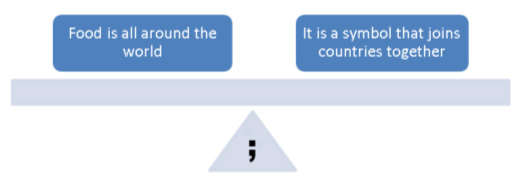Commas and Semicolons
Click to download a PDF of this lesson.
Using commas in your writing can improve your clarity, avoid confusion, and create natural pauses for your reader. Comma use can be mandatory, prohibited, or optional. The following list addresses all three of these cases together in seven rules. Note that the symbol Ø is used to mean null or no comma. For semicolons, while they may seem tricky, only three rules exist for their usage. Independent clauses are underlined when relevant. For more information about sentence types, comma splices, run-on sentences, and fragments, please see our Sentence Boundaries chapter.

